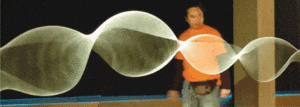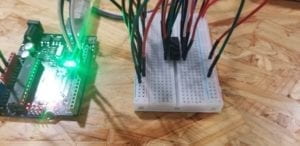Question 1:
What kind of machines would you be interested in building? Add a reflection about the use of actuators, the digital manipulation of art, and the creative process to your blog post.
As we continue to learn about new mechanisms and functions of code, the possibilities for creative innovation has skyrocketed. We now know how to operate motors, a very valuable source of motion. Motors can be found in fans, cars, cellphones, and a countless number of electronic devices. It’s up to me to think of how to combine these machines to create something interesting. In terms of the process, I feel it’s most challenging to find the medium between creative aspiration and skill-set. I want to be pushed in terms of allowing myself to think of unique and innovative devices, however, I am still bound by my limited skill-set. With that in mind, I believe with the actuators we’ve used so far there is still opportunities for unique innovation. It reminds me of creating a film with a small-budget and how the film is as good as it is innovative. Therefore, my limitations should only strengthen my need to be creative. This is easier said than done, but I’m looking forward to trying in my midterm project.
Question 2:
Choose an art installation mentioned in the reading ART + Science NOW, Stephen Wilson (Kinetics chapter). Post your thoughts about it and make a comparison with the work you did during this recitation. How do you think that the artist selected those specific actuators for his project?
In the reading ART + Science NOW by Stephen Wilson, artwork by Daniel Palacios Jimenez is referenced. The art piece, called Waves, uses motors to rotate elastic ropes creating various patterns and sounds. From my understanding, it seems Jimenez is using actuators as a way to express the visual portrayal of motion at various levels. The result of something robotic or man-made being spun in open space allows us to reflect on the nature of the movement. This is very much similar to the project we made in our recitation class as the two motors allowed us to physically visualize the patterns of recurring motion.

